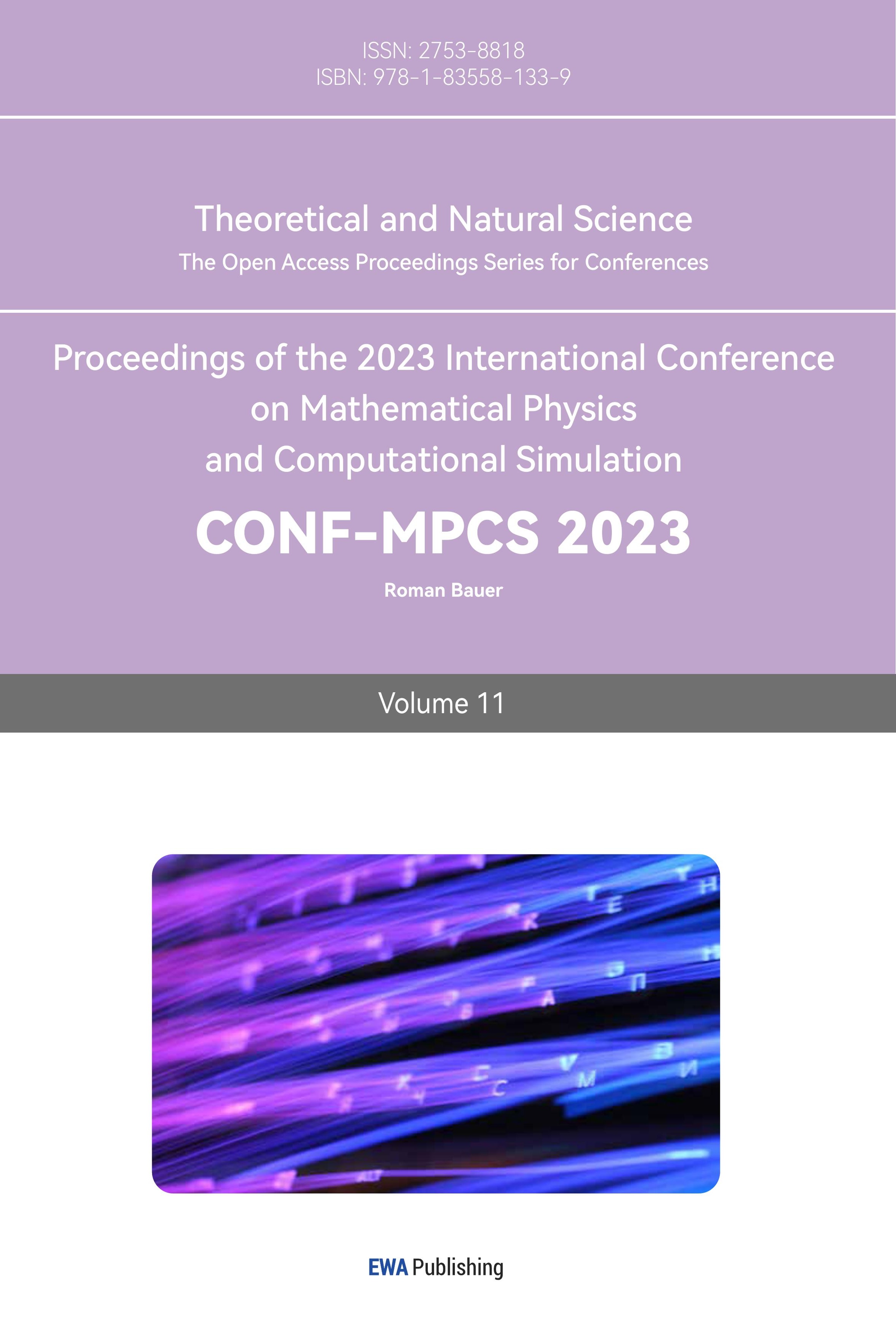References
[1]. Kostoff, R.N. and R. M. (2013) Cummings Highly Cited Literature of High-Speed Com pressible Flow Research, Aerospace Science and Technology, Volume 26, Issue 1, April–May, pp.216-234. https://stip.gatech.edu/wpcontent/uploads/2012/07/HYPERSONIC-_LITSURVEY-2012_RNK_ADD_1
[2]. Tsien, H-S. (1946) Similarity Laws of Hypersonic Flows, Journal of Mathematics and Physics.
[3]. Bureau of Transportation Statistics (2023) Full Year 2022 U.S. Airline Traffic Data, Thursday, March 16. https://www.bts.gov/newsroom/full-year-2022-us-airline-traffic-data
[4]. Sziroczak D., Smith H. (2016) A Review of Design issues specific to hypersonic flights vehicles, Progress in Aerospace Sciences, 84: pp.1-28.
[5]. Tegler E. (2022) A Houston Hypersonic Transport Startup Promises Passenger Flights from L.A. to Tokyo In An Hour, April 7. https://www.forbes.com/sites/erictegler/2022/04/07/a-houston-based-hypersonic-transport-startup-promises-passenger-flights-from-la-to-tokyo-in-about-an-hour/?sh=64b311857055.
[6]. Carissa Christensen, Susan Albert, Carie Mullins, Blake Ahadi, Phil Smith, and Don Buley (2021) Independent Market Study, Commercial Hypersonic Transportation, NASA, April. https://ntrs.nasa.gov/api/citations/20210015471/downloads/SAIC%20BryceTech%20Commercial%20Hypersonics%20Transportation%2020210506
[7]. Fletcher, D.G. (2004) Fundamental of Hypersonic Flow Aerothermodynamics, RTO AVT Lecture Series RTO-EN-AVT-116, 10-14 May. https://www.sto.nato.int/publica tions/STO%20Educational%20Notes/RTO-EN-AVT-116/EN-AVT-116-03
[8]. Liepmann H.W., Roshko, A. (2001) Elements of Gasdynamics [M] Dover Publications, pp.378.
[9]. Cockrell, Huebner and Finley, Corda and Anderson (1988) Waverider Design, https://aerospaceweb.org/design/waverider/waverider.shtml
[10]. John D. Anderson, Hypersonic and High-Temperature Gas Dynamics, second edition, American Institute of Aeronautics and Astronautics, Inc. 1801 Alexander Bell Drive, Reston, Virginia 20191-4344.
[11]. Taylor, G. I., and J. W. Maccoll. (1933) “The Air Pressure on a Cone Moving at High Speeds. I.” Proceedings of the Royal Society of London. Series A, Containing Papers of a Mathe matical and Physical Character, vol. 139, no. 838, pp. 278–97. JSTOR, http://www.jstor.-org/stable/95973. Accessed 8 May 2023.
[12]. BryceTech, SAIC (2021) NASA Commercial Hypersonic Transportation Market Study, April. https://ntrs.nasa.gov/api/citations/20210015471/downloads/SAIC%20BryceTech%20Commercial%20Hypersonics%20Transportation%2020210506.
[13]. Kirkham, P.S., and J. L. Hunt (1977) Hypersonic Transport Technology, Acta Astronautica, Volume 4, Issues 1–2, January–February, pp.181-199. https://www.sciencedirect.co-m/science-/article/abs/pii/0094576577900406?via%3Dihub
[14]. Heppenheimer, T.A. (2007) Facing the Heat Barrier: A History of Hypersonics, The NASA History Series National Aeronautics and Space Administration, NASA History Division Office of External Relations Washington, D.C. https://history.nasa.gov/sp4232-part3.
Cite this article
Gao,Y. (2023). A design review on hypersonic aerodynamics configurations and applicability to hypersonic transports. Theoretical and Natural Science,11,128-135.
Data availability
The datasets used and/or analyzed during the current study will be available from the authors upon reasonable request.
Disclaimer/Publisher's Note
The statements, opinions and data contained in all publications are solely those of the individual author(s) and contributor(s) and not of EWA Publishing and/or the editor(s). EWA Publishing and/or the editor(s) disclaim responsibility for any injury to people or property resulting from any ideas, methods, instructions or products referred to in the content.
About volume
Volume title: Proceedings of the 2023 International Conference on Mathematical Physics and Computational Simulation
© 2024 by the author(s). Licensee EWA Publishing, Oxford, UK. This article is an open access article distributed under the terms and
conditions of the Creative Commons Attribution (CC BY) license. Authors who
publish this series agree to the following terms:
1. Authors retain copyright and grant the series right of first publication with the work simultaneously licensed under a Creative Commons
Attribution License that allows others to share the work with an acknowledgment of the work's authorship and initial publication in this
series.
2. Authors are able to enter into separate, additional contractual arrangements for the non-exclusive distribution of the series's published
version of the work (e.g., post it to an institutional repository or publish it in a book), with an acknowledgment of its initial
publication in this series.
3. Authors are permitted and encouraged to post their work online (e.g., in institutional repositories or on their website) prior to and
during the submission process, as it can lead to productive exchanges, as well as earlier and greater citation of published work (See
Open access policy for details).
References
[1]. Kostoff, R.N. and R. M. (2013) Cummings Highly Cited Literature of High-Speed Com pressible Flow Research, Aerospace Science and Technology, Volume 26, Issue 1, April–May, pp.216-234. https://stip.gatech.edu/wpcontent/uploads/2012/07/HYPERSONIC-_LITSURVEY-2012_RNK_ADD_1
[2]. Tsien, H-S. (1946) Similarity Laws of Hypersonic Flows, Journal of Mathematics and Physics.
[3]. Bureau of Transportation Statistics (2023) Full Year 2022 U.S. Airline Traffic Data, Thursday, March 16. https://www.bts.gov/newsroom/full-year-2022-us-airline-traffic-data
[4]. Sziroczak D., Smith H. (2016) A Review of Design issues specific to hypersonic flights vehicles, Progress in Aerospace Sciences, 84: pp.1-28.
[5]. Tegler E. (2022) A Houston Hypersonic Transport Startup Promises Passenger Flights from L.A. to Tokyo In An Hour, April 7. https://www.forbes.com/sites/erictegler/2022/04/07/a-houston-based-hypersonic-transport-startup-promises-passenger-flights-from-la-to-tokyo-in-about-an-hour/?sh=64b311857055.
[6]. Carissa Christensen, Susan Albert, Carie Mullins, Blake Ahadi, Phil Smith, and Don Buley (2021) Independent Market Study, Commercial Hypersonic Transportation, NASA, April. https://ntrs.nasa.gov/api/citations/20210015471/downloads/SAIC%20BryceTech%20Commercial%20Hypersonics%20Transportation%2020210506
[7]. Fletcher, D.G. (2004) Fundamental of Hypersonic Flow Aerothermodynamics, RTO AVT Lecture Series RTO-EN-AVT-116, 10-14 May. https://www.sto.nato.int/publica tions/STO%20Educational%20Notes/RTO-EN-AVT-116/EN-AVT-116-03
[8]. Liepmann H.W., Roshko, A. (2001) Elements of Gasdynamics [M] Dover Publications, pp.378.
[9]. Cockrell, Huebner and Finley, Corda and Anderson (1988) Waverider Design, https://aerospaceweb.org/design/waverider/waverider.shtml
[10]. John D. Anderson, Hypersonic and High-Temperature Gas Dynamics, second edition, American Institute of Aeronautics and Astronautics, Inc. 1801 Alexander Bell Drive, Reston, Virginia 20191-4344.
[11]. Taylor, G. I., and J. W. Maccoll. (1933) “The Air Pressure on a Cone Moving at High Speeds. I.” Proceedings of the Royal Society of London. Series A, Containing Papers of a Mathe matical and Physical Character, vol. 139, no. 838, pp. 278–97. JSTOR, http://www.jstor.-org/stable/95973. Accessed 8 May 2023.
[12]. BryceTech, SAIC (2021) NASA Commercial Hypersonic Transportation Market Study, April. https://ntrs.nasa.gov/api/citations/20210015471/downloads/SAIC%20BryceTech%20Commercial%20Hypersonics%20Transportation%2020210506.
[13]. Kirkham, P.S., and J. L. Hunt (1977) Hypersonic Transport Technology, Acta Astronautica, Volume 4, Issues 1–2, January–February, pp.181-199. https://www.sciencedirect.co-m/science-/article/abs/pii/0094576577900406?via%3Dihub
[14]. Heppenheimer, T.A. (2007) Facing the Heat Barrier: A History of Hypersonics, The NASA History Series National Aeronautics and Space Administration, NASA History Division Office of External Relations Washington, D.C. https://history.nasa.gov/sp4232-part3.









